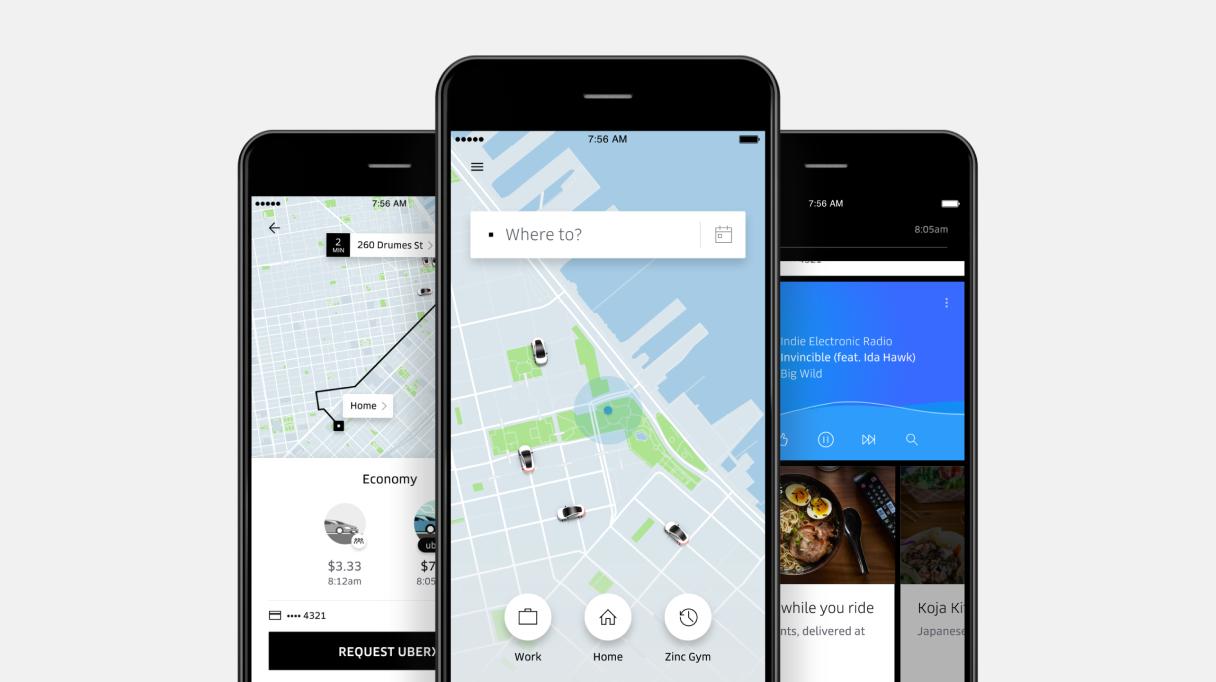What is AI customer experience?
AI customer experience is the deployment of artificial intelligence across the customer journey to deliver a personalized, seamless experience to the customer, however, and wherever they interact with your business.
When AI and customer experience are combined, AI tools like chatbots , virtual assistants and machine learning algorithms analyze vast amounts of customer data to anticipate issues and offer real-time assistance.
Let’s understand AI-powered customer experience with a practical example. For example, AI can recognize patterns in customer queries, enabling automated systems to provide accurate answers or route complex issues to the right human agent.
AI can identify patterns in customer queries, allowing automated systems to deliver precise answers or escalate complex issues to the right human agent seamlessly.
Personalization is another major benefit, with AI remembering customer preferences and past interactions to offer tailored recommendations and solutions.
Efficiency is greatly enhanced as AI takes care of routine inquiries, freeing up human agents to tackle more complicated cases, which not only speeds up response times but also elevates service quality.
AI-driven analytics further empower businesses to gain insights into customer behavior, enabling continuous refinement of service strategies for better experiences.
While integrating AI in CX may involve initial considerations around time, cost and technological complexity, the outcomes empower companies to deliver unprecedented levels of personalization at a scale that was unimaginable just a decade ago. The result is a data-driven approach that anticipates the customer’s needs, tailors the support experience and ultimately transforms the customer experience landscape.
Evolution of AI in customer experience
CX was a miniscule business aspect a few decades ago until COVID-19 set in and catapulted it into the league of key business differentiators. 44.5% of organizations worldwide view customer experience (CX) as their main competitive differentiator. However, this evolution didn't happen overnight; it underwent at least six major milestones spanning three decades to arrive at the turning point it is now. Let’s look.
🚩Early 2000s: Basic Automation in customer service
Milestone: Introduction of simple chatbots and IVR (Interactive Voice Response) systems.
Impact: These tools handled routine inquiries but were often limited and rigid, setting the stage for more advanced AI.
🚩2010: AI Starts Understanding Human Language
Milestone: Advancements in machine learning and NLP (Natural Language Processing) in customer service led to more sophisticated chatbots.
Impact: AI, leveraging machine learning and NLP techniques, began understanding and responding to customer queries in natural language, greatly enhancing interaction quality in customer service.
🚩2015: AI Can Predict Future Customer Needs
Milestone: AI-driven personalization and predictive analytics became widespread.
Impact: AI systems analyze customer data to predict needs and preferences, enabling personalized recommendations and proactive customer service.
🚩2018: Integration of AI Across all Platforms
Milestone: AI became integral to omnichannel customer experiences.
Impact: AI provided consistent, personalized interactions across multiple touchpoints, whether on social media, email or live chat.
🚩2020: AI Delivers Deep Customer Insights with Sentiment Analysis
Milestone: AI began leveraging sentiment analysis to understand customer emotions in real-time.
Impact: This allowed businesses to tailor responses based on customer mood, leading to more empathic customer service.
🚩2023: Autonomous AI Takes Over Customer Service
Milestone: Conversational IVR systems, enhanced by generative AI, achieved hyper-personalization by offering seamless, voice-based interactions without the need for text inputs from customers.
Impact: These advanced conversational IVR tools, utilizing generative AI, independently resolve customer queries with higher success rates than traditional IVR systems. They adapt and learn from each interaction, significantly reducing the need for human intervention and improving the efficiency of customer service.
Present and Future: AI Becomes a Key Partner in Shaping CX Strategy
Milestone: AI is now viewed as a critical partner in designing and delivering customer experiences. AI is now seen as a crucial partner in crafting and delivering exceptional customer experiences. With Sprinklr’s digital twin technology, AI acts as a copilot for brands and teams, enhancing their ability to provide stellar CX by simulating and optimizing interactions and outcomes.
Impact: Continuous advancements in AI are expected to further refine personalization, predictive capabilities and efficiency, driving even higher customer satisfaction and loyalty.
The evolution of AI in CX has been incredible but to understand the impact AI had on CX, we need to understand how traditional CX used to function.
AI CX vs Traditional CX
As businesses increasingly prioritize customer experience, it's crucial to understand how AI-driven customer experience (AI CX) stands in contrast to traditional approaches. While traditional CX relies on established methods and manual processes, AI CX leverages advanced technologies to enhance and streamline interactions. The comparison below highlights key differences between these two approaches, showcasing how AI's capabilities in automation, personalization and real-time insights are transforming customer service and let us show you how.
Here’s a comparison of AI-driven customer experience (AI CX) versus traditional customer experience (Traditional CX):
Aspect | Traditional CX | AI CX |
Interaction | Primarily human-agent interactions | Mix of human and AI-driven interactions |
Response time | Relies on human speed and efficiency | Rapid and automated responses |
Availability | Limited by human working hours | 24/7 availability for automated support |
Personalization | Restricted by manual audience profiling | Dynamic and deep personalization, driven by real-time customer behaviors |
Handling technical complexity | Limited ability to handle complex queries like highly technical issues that require a trained expert | Can handle intricate tasks like technical troubleshooting with machine learning as AI customer experience learns constantly and continuously with incoming data sets |
Handling Situational Complexity | Human agents excel in understanding nuanced situations, providing empathetic responses and adapting to the customer's emotional state. | AI may struggle with handling emotional nuances and adapting responses to the customer's emotional state. |
Learning and adaptation | Human agents learn from experience and static data | AI systems continuously learn and adapt from real-time customer interaction analytics and behavioral data |
Scalability | Relies on the number of available human agents to scale | Easily scalable with automation and AI |
Cost efficiency | Costs associated with recruiting and training human labor and human churn. | Potential for cost reduction with automation and enhanced productivity and resource allocation |
Adaptability | Slower to adapt to changing trends | Adapts to changes leveraging machine learning and agile algorithms, ensuring relevance in dynamic markets |
Proactivity | Reactive approach to customer needs | Proactive and preventive, anticipating and addressing issues |
Feedback Handling | Manual handling of feedback leads to slower response times, human errors in interpretation and difficulty in analyzing large volumes of data | AI systems can automate feedback analysis, extracting actionable insights at scale |
This table highlights how AI-driven CX offers greater efficiency, personalization and scalability than traditional methods. To take advantage of AI’s full potential, you must integrate certain technologies in your front and backend systems that come into play at different stages in your customer’s journey. Let’s learn about them in the next section.
Top 5 AI-driven customer experience technologies [+Integration]
1. AI customer experience technologies for driving awareness and discovery
Predictive analytics:
Uses data to identify potential customers and predict their needs. Integrating predictive analytics tools to analyze market trends and customer data helps in identifying high-potential leads and tailoring marketing efforts to target them effectively.

AI-powered content creation:
Generates personalized content to attract and engage potential customers. Using AI content creation tools like GPT-4 to create personalized blog posts, social media content and email campaigns that resonate with your target audience can help you boost engagement and brand awareness.
2. AI customer experience technologies for research and consideration
Natural language processing (NLP):
Sprinklr’s AI-powered NLP engine interprets customer queries in real-time across channels, delivering consistent responses and providing personalized answers to questions—whether it's through live chat, social media or email. It makes the research process smooth and intuitive for customers by offering relevant information quickly.

Sentiment analysis:
Sprinklr’s advanced sentiment analysis tool scans customer conversations and social media interactions to gauge emotional tones. By integrating this into your engagement strategy, businesses can predict how customers feel about products, enabling real-time adjustments in messaging or support that influence purchasing decisions.
3. AI customer experience technologies for purchase and onboarding
Speech recognition:
AI-powered speech recognition improves voice-based interactions by converting spoken words into text and enabling voice commands. Integrating speech recognition into customer service calls or support systems allows customers to complete purchases through voice, enhancing convenience and speeding up the process. It's especially useful for mobile or hands-free transactions.

Robotics process automation (RPA):
RPA automates repetitive tasks, such as sending welcome emails, confirming orders or verifying payments. Integrating RPA into your onboarding process ensures that every customer receives a consistent and smooth welcome experience, freeing up human agents to focus on higher-level tasks. It reduces errors and speeds up the customer onboarding process significantly.
4. AI customer experience technologies for retention and loyalty
Deep learning:
Deep learning models analyze vast amounts of customer data to predict behaviors, preferences and potential churn. By integrating deep learning algorithms into your CRM or loyalty programs, businesses can proactively engage customers with personalized offers, loyalty rewards or retention strategies, ensuring long-term satisfaction and repeat business.

Sentiment analysis:
Beyond research, sentiment analysis can monitor ongoing customer interactions to detect dissatisfaction or frustration. Integrating sentiment analysis helps identify at-risk customers, allowing businesses to intervene and provide special offers or customer care that keeps them loyal.
5. AI customer experience technologies for advocacy and referrals
Computer vision:
Computer vision enables visual data analysis and can enhance customer experiences by allowing image-based product recommendations, visual search capabilities or scanning loyalty cards with ease. Integrating computer vision into customer advocacy programs lets customers engage through visual feedback, such as sharing product photos in exchange for rewards, and driving organic referrals.Robotics process automation (RPA):
RPA can automate referral programs by tracking customer referrals, issuing rewards and sending personalized thank-you messages. Integrating RPA into your referral system creates a seamless experience, making it easy for satisfied customers to advocate for your brand without manual intervention.

An all-in-one solution is what you need
Sprinklr provides a comprehensive suite of AI-driven customer experience technologies that transform each stage of the customer journey
From Natural Language Processing (NLP) and sentiment analysis that enable personalized and context-aware interactions, to deep learning models that predict customer behavior, Sprinklr ensures every touchpoint feels relevant and seamless.
Speech recognition enhances voice interactions for smoother purchases, while robotic process automation (RPA) automates repetitive tasks like onboarding and referrals, ensuring efficiency.
With computer vision for visual search and feedback,
Sprinklr creates a unified, AI-powered ecosystem that drives customer satisfaction, loyalty and advocacy across the entire CX journey.
7 ways to improve customer experience with AI for businesses
Integrating artificial intelligence with customer experience requires strategic planning. You need access to customer data, robust IT structure and the best AI-powered customer experience solutions to derive real gains from this move. But the starting point is a failproof customer experience optimization plan that hinges around AI and that’s what we cover in this section.
Below is a step-by-step strategy to entwine AI and CX so you can score big cost savings in the form of happy customers, productive teams and steady revenue growth. Let’s get started. Follow the steps below to take your CX to the next level.
1. Develop an AI-led CX Strategy
To develop an effective AI-led CX strategy,
Start by aligning your team around a clear CX vision and defining specific goals for how AI will help achieve it, such as improving customer satisfaction or streamlining support.
Map out the customer journey to identify key touchpoints where AI can make the most impact, from personalized recommendations to real-time support.
Set measurable KPIs, like customer satisfaction scores or response times, to track progress and ensure your AI initiatives are delivering value.
Finally, choose the right AI tools, such as chatbots, predictive analytics and RPA, to create an efficient, customer-focused ecosystem that continuously drives success.
2. Map user journeys
Understand user interactions across discovery, pre-sales, sales and support. Mapping it will help you create an effective AI customer journey. Invest time comprehensively mapping touchpoints to deliver an AI-based omnichannel customer experience.
Learn More: Understand the Customer Journey Mapping To Serve Them Better
3. Assess the current infrastructure
Before integrating AI into your customer experience strategy, it's essential to assess your current infrastructure to ensure seamless implementation. This involves evaluating systems, data and team capabilities to identify potential limitations that may affect AI performance. A thorough assessment helps ensure AI tools deliver value at every customer touchpoint. Here are the steps to follow:
Evaluate current tools for AI integration readiness and address any gaps that could hinder seamless operation.
Ensure data is clean, accurate and consistent, as high-quality data is crucial for reliable AI insights.
Evaluate your team’s proficiency with AI technologies, identify skill gaps and plan necessary training to support successful integration.
Review workflows, leadership alignment and company culture to ensure they fully support AI adoption and innovation.
📃Case Study Time
How Microsoft outsourced their CX management for big gains
Microsoft faced the challenge of managing its extensive social media presence amidst a vast volume of data, totaling 115 million mentions annually. They faced three major operational challenges:
Data sharing limitations: The in-house solution restricted the easy sharing of social data across teams.
Slow maintenance: Repairs and updates were time-consuming and costly.
Scalability issues: The platform couldn’t handle increasing data demands.
To address this, they sought a solution to consolidate its multiplatform social media management operations and streamline workflows disrupted by multiple-point solutions.
Microsoft chose Sprinklr's Unified Customer Experience Management (Unified-CXM) platform, transforming its Customer Experience Center (CXC) into the hub for social engagement.
The result?
Sprinklr pulled in 8.6 billion social listening mentions in the first year, replacing Microsoft’s in-house tool and providing a richer data source for insights.
Microsoft’s SIP team doubled the number of projects executed for internal stakeholders, significantly improving productivity.
Sprinklr continuously improved its platform based on Microsoft's feedback, making it more user-friendly for social listening analysts and day-to-day users.
4. Evaluate AI tools and solutions
Before finalizing AI solutions, analyze if your customer data is AI-ready using these four parameters:
Criteria | Description |
Quality | Check accuracy, completeness and consistency for reliable AI training and predictions. |
Relevance | Assess if data aligns with AI project objectives for meaningful insights and performance. |
Volume and Variety | Ensure sufficient data volume and diverse types for robust model training and understanding. |
Accessibility and Security | Verify data accessibility and prioritize security to protect sensitive information, complying with privacy regulations. |
Recognize the various AI technologies—recommendation engines, virtual assistants, predictive search engines, computer vision and sentiment analysis tools. Determine which aligns with your business model and prioritize their implementation accordingly. Recommendation engines are excellent for personalizing content and driving engagement, while virtual assistants provide hands-free support for efficiency. Computer vision is crucial for tasks like signature verification and fraud prevention.
Start by investing in technologies that address your most pressing needs. For example, if personalization is a key driver for your business, prioritize recommendation engines. Assess the immediate impact and ROI of each technology to guide your investment decisions. Ensure that your chosen AI solutions integrate seamlessly with existing systems and support your strategic goals.
📝Point to note
In this stage, beware of picking multiple-point solutions for different AI functions like sentiment analysis, predictive analytics and more. The resulting insights and data will be fragmented, giving you a distorted picture of your present customer experience. It’s advisable to invest in a holistic, AI-driven customer experience management platform that offers all these capabilities and unifies insights and data seamlessly.
5. Implement your AI-powered CXM solution
Seamlessly introduce AI into your current tech stack, such as contact center CRM communication channels and analytics tools, by starting with pilot programs. Begin by implementing AI solutions with small groups to test their integration and identify any bugs or disruptions.
This approach allows you to make necessary adjustments before a full deployment, ensuring that AI enhances rather than disrupts your ongoing operations. Once the pilot phase is successful and any issues are resolved, you can confidently roll out the AI technologies across your entire system.
6. Monitor and optimize
Incorporating AI is not the final step. You need to deploy customer experience analytics to track key CX metrics, such as customer satisfaction scores, response times and engagement levels. Regularly evaluate these metrics and refine your strategy based on the insights gathered. This continuous assessment ensures ongoing improvement and helps you create a more effective and responsive customer experience in the future.
7. Stay informed on AI ethics
As you implement AI, stay updated on the evolving standards and regulations related to AI ethics and data privacy to ensure compliance. Understand that “Responsible AI” is the intersection of trust, partnership and integrity between brands, vendors and consumers and is vital to all public-facing companies.
Implementation challenges + fixes
AI customer experience impacts every touchpoint in the buying journey and, in the process, gives a tremendous boost to the marketing, sales and customer service efforts of a company in the following ways.
1. Data quality and integration
Challenge: AI systems rely heavily on high-quality data. Poor data quality or difficulties in integrating AI with existing systems can lead to inaccurate insights and ineffective solutions.
Fix: Start by auditing your data sources and ensuring they are clean and accurate. Implement robust data integration solutions that allow seamless data flow between your AI systems and existing customer service platforms. Regularly update and maintain your data to support AI effectiveness.
2. Customer resistance to AI
Challenge: Customers might resist interacting with AI-driven tools, preferring human interaction instead. This resistance can affect the adoption and effectiveness of AI solutions.
Fix: Ensure that AI tools, such as chatbots, are designed to complement human agents rather than replace them. Provide options for customers to escalate issues to human representatives if needed. Educate customers on the benefits of AI in improving response times and service efficiency.
3. Lack of personalization
Challenge: AI systems can sometimes deliver generic responses if not properly configured, leading to a lack of personalization in customer interactions.
Fix: Invest in AI technologies that support advanced personalization, such as machine learning algorithms that learn from customer behavior and preferences. Continuously refine AI models based on feedback and interaction data to enhance personalization.
Sprinklr Pro-tip:
Social sellers leveraging AI-powered solutions, such as Sprinklr AI+, produce customized posts that resonate with specific audience segments.
JPMorgan Chase partnered with AI startup Persado to explore AI-generated ad copy. Contrary to expectations, the AI-produced content surpassed human-written copy, achieving double the click rates in many instances. It led to a remarkable 450% increase in click-through rates.
4. Technical complexity
Challenge: Implementing AI can be technically complex, requiring significant changes to existing workflows and infrastructure.
Fix: Begin with pilot programs to test AI tools on a small scale before full deployment. Work with AI vendors who provide comprehensive support and training. Ensure that your IT team is equipped with the necessary skills or hire experts to manage the implementation.
5. Measuring Effectiveness
Challenge: Measuring the effectiveness of AI in improving customer experience can be challenging without clear metrics.
Fix: Define and track key performance indicators (KPIs) such as customer satisfaction scores, response times, and resolution rates. Use customer experience analytics to assess the impact of AI tools and make data-driven adjustments to your strategy.
Ready to enhance customer experience with AI? Take a cue from Planet Fitness's incredible transformation
Planet Fitness, a prominent fitness center franchise, aimed to elevate its customer experience across multiple touchpoints. Partnering with Sprinklr in 2020, they sought a unified platform for social media management, customer service and brand reputation.
Challenge: Planet Fitness grappled with the surge in customer inquiries across diverse channels, impacting response times and overall service quality. In June 2023, they joined Sprinklr AI+ beta to explore AI's potential in enhancing member experience, workflow and consumer insights.
Solution: AI+ became a personal assistant for 38 social media care representatives, tailoring responses and refining social listening queries. It empowered them to save time, maintain consistent messaging and proactively address issues, ensuring a seamless and responsive engagement.
Results: Sprinklr AI+ significantly lightened the workload, elevating response quality. Features like "Make it Longer" and tone modification enhanced customization, striking a balance between speed and precision. The focus on response quality markedly improved the overall customer experience.
If you want to transform your customer experience with AI, explore Sprinklr's Customer Experience Management (CXM) platform.
Request a demo to see how Sprinklr's advanced AI-driven solutions can help you create bespoke journeys for every customer. Experience firsthand how Sprinklr’s integrated platform enhances every stage of the customer journey, from personalization to analytics.
Frequently Asked Questions
Thank you for contacting us.
A Sprinklr representative will be in touch with you shortly.
Contact us today, and we'll create a customized proposal that addresses your unique business needs.
Request a Demo
Welcome Back,
No need to fill out any forms — you're all set.







